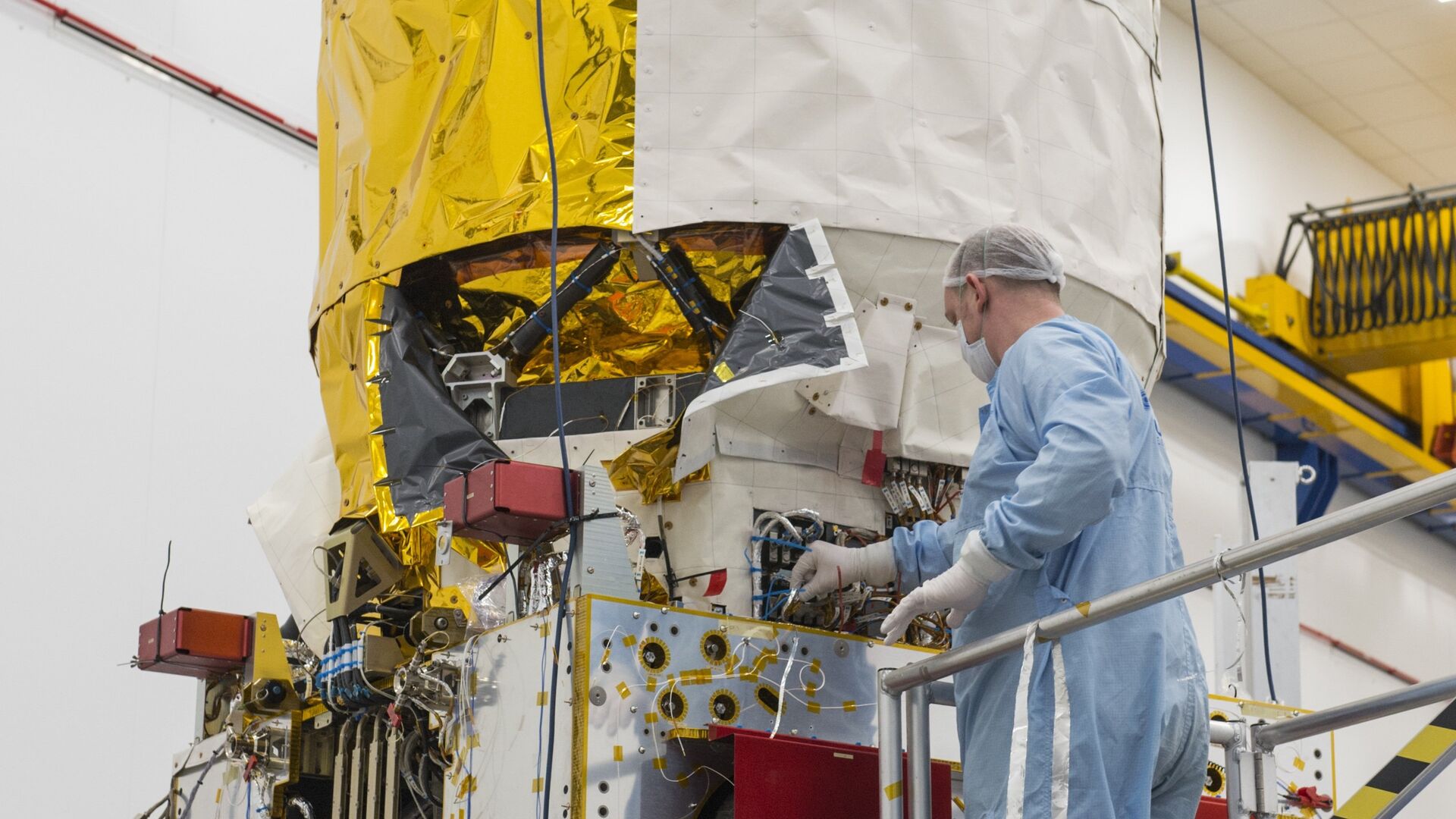https://sputnikglobe.com/20230729/impossible-satellite-aeolus-beats-the-odds-revolutionizes-weather-forecasting-1112236380.html
'Impossible Satellite' Aeolus Beats the Odds, Revolutionizes Weather Forecasting
'Impossible Satellite' Aeolus Beats the Odds, Revolutionizes Weather Forecasting
Sputnik International
Unlike traditional methods that provided limited and localized data, Aeolus could track global wind movement at all altitudes, from the surface up to the stratosphere.
2023-07-29T06:56+0000
2023-07-29T06:56+0000
2023-07-29T06:56+0000
beyond politics
science & tech
european space agency (esa)
satellite
https://cdn1.img.sputnikglobe.com/img/104977/61/1049776127_0:1434:3053:3151_1920x0_80_0_0_4538a1b96ac2d3ee5545905a58b8543b.jpg
The primary objective of Aeolus was to revolutionize weather forecasting by mapping Earth's winds using an innovative ultraviolet laser. Unlike traditional methods that provided limited and localized data, Aeolus could track global wind movement at all altitudes, from the surface up to the stratosphere.This information proved to be of immense value for medium-range weather predictions, offering critical insights into the wind behavior influencing future weather patterns, including the paths of hurricanes and the movement of volcanic ash in the upper atmosphere.Despite its eventual success, the road to Aeolus's accomplishment was arduous, with engineers working relentlessly for over a decade to overcome numerous challenges. Initially deemed unfeasible due to the difficulty of developing an instrument that could function effectively in the vacuum of space, the satellite earned the moniker "the impossible satellite." Nevertheless, the European Space Agency (ESA) and its dedicated team of engineers persevered, recognizing the historic potential of obtaining the world's first comprehensive view of global wind patterns.However, advancements in best practices for de-orbiting defunct spacecraft posed a significant hurdle for Aeolus. To comply with modern safety guidelines, satellites must either be precisely directed to a secure re-entry zone or be designed to entirely burn up upon atmospheric entry. Regrettably, Aeolus could not meet these criteria. Its propulsion system lacked the power to precisely control its descent, leading to an estimated 20% of its hardware being likely to survive the re-entry process.To mitigate any potential risks, ESA flight controllers meticulously orchestrated an "assisted re-entry" strategy. Over the past week, they executed a series of maneuvers to lower the satellite's altitude progressively, ultimately leading to its fiery destruction within approximately two and a half revolutions around the Earth.
https://sputnikglobe.com/20230729/nasa-loses-contact-with-iss-for-20-minutes-as-houston-hq-suffers-power-outage-1112235470.html
Sputnik International
feedback@sputniknews.com
+74956456601
MIA „Rossiya Segodnya“
2023
News
en_EN
Sputnik International
feedback@sputniknews.com
+74956456601
MIA „Rossiya Segodnya“
Sputnik International
feedback@sputniknews.com
+74956456601
MIA „Rossiya Segodnya“
aeolus satellite, aeolus mission, how does weather forecast work, how does weather forecasting work, european space agency esa weather forecast satellites, impossible satellite aeolus
aeolus satellite, aeolus mission, how does weather forecast work, how does weather forecasting work, european space agency esa weather forecast satellites, impossible satellite aeolus
'Impossible Satellite' Aeolus Beats the Odds, Revolutionizes Weather Forecasting
In a daring and groundbreaking mission, Europe's Aeolus satellite, hailed as the "impossible satellite," has fulfilled its extraordinary purpose and safely concluded its space journey. On Friday, the final commands were issued to guide the spacecraft out of orbit, with the expectation that it would burn up upon re-entry over the Atlantic Ocean.
The primary objective of Aeolus was
to revolutionize weather forecasting by mapping Earth's winds using an innovative ultraviolet laser. Unlike traditional methods that provided limited and localized data, Aeolus could track global wind movement at all altitudes, from the surface up to the stratosphere.
This information proved to be of immense value for medium-range weather predictions, offering critical insights into the wind behavior influencing future weather patterns, including the paths of hurricanes and the movement of volcanic ash in the upper atmosphere.
Despite its eventual success, the road to Aeolus's accomplishment was arduous, with engineers working relentlessly for over a decade to overcome numerous challenges. Initially deemed unfeasible due to the difficulty of developing an instrument that could function effectively in the vacuum of space, the satellite earned the moniker "the impossible satellite."
Nevertheless, the European Space Agency (ESA) and its dedicated team of engineers persevered, recognizing the historic potential of obtaining the world's first comprehensive view of global wind patterns.
However, advancements in best practices for de-orbiting defunct spacecraft posed a significant hurdle for Aeolus. To comply with modern safety guidelines, satellites must either be precisely directed to a secure re-entry zone or be designed to entirely burn up upon atmospheric entry.
Regrettably, Aeolus could not meet these criteria. Its propulsion system lacked the power to precisely control its descent, leading to an estimated 20% of its hardware being likely to survive the re-entry process.
To mitigate any potential risks, ESA flight controllers meticulously orchestrated an "assisted re-entry" strategy. Over the past week, they executed a series of maneuvers to lower the satellite's altitude progressively, ultimately leading to its fiery destruction within approximately two and a half revolutions around the Earth.
The success of Aeolus has already sparked plans for its successor program, Aeolus-2, which has received financial approval from ESA member states and Eumetsat, the organization overseeing Europe's meteorological satellites. With an allocated budget of €413 million, the development of this set of follow-up spacecraft is set to begin soon, with the first launch expected later in the decade.



